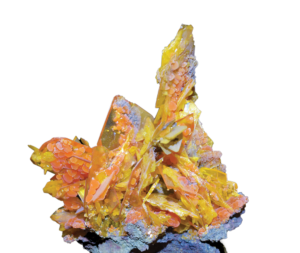I have long been fascinated with wild food foraging. Helping family members learn about wild edibles has developed into a hobby that has allowed us to experience, to a degree, how our ancestors lived off the land.
Foraging for plants and hunting wild game are ancient patterns of human subsistence. For thousands of years, people survived in this manner. In 1972, Richard Mabey published the book Food for Free; and soon, the world began looking at “weeds” differently. The phrase “if you can’t beat ‘em, eat them” reflected peoples’ desire to cut costs and conserve. Today, as global resources run low, Mabey’s sentiments have taken on new meaning.
To survive, wild plants must cope with herbivores and climatic changes. They’ve evolved to become species that contain high concentrations of carbohydrates, fats and proteins.
Many of the tastes we appreciate, such as sourness, sweetness and saltiness, are adaptations plants have developed to discourage herbivores. Many renewable herbs, greens, fruits, berries and seeds thrive in backyards. Although we can easily incorporate these tasty resources into meals, many people destroy them as weeds.
“Up until World War II, people ate ‘weeds’ regularly,” notes Peter Gail, author of The Dandelion Celebration. “Dandelions, lamb’s-quarters—all sorts of wild plants—were part of daily diets. The bias against wild edibles came after World War II, in part because of pesticide company advertising.” Gail continues, “The pesticide industry convinced consumers they should value green lawns, and the way to get a lawn green was by ridding it of weeds.”
Today, concern over the health risks of pesticides and preservatives in commercially-prepared foods make wild edibles increasingly appealing. As an added bonus for consumers concerned with protecting the environment, many wild edibles are naturally-renewable food resources that thrive under difficult growing conditions.
Only recently has a broader awareness of native food developed. This is a cuisine from people whose food supply has oftentimes been whatever they could find, wherever they found it.
In addition to blueberries, black cherries, crabapples and grapes, native foods include seeds. Living off the land as wild animals (did) do, man ate seeds that were nutritionally appealing. Nuts are seeds. The great advantage to man of nut-bearing trees is that, unlike animals, they can’t run away. The energy expended by humans in gathering nuts is much less than the energy spent obtaining similar caloric value from hunting. Ground into flour, chestnuts pack a nutritional wallop and contribute to such savory dishes as nutty-tasting crepes.
Fruits contain a variety of cancer-suppressing chemicals. Blueberries, wild cherries and dandelions are among my favorite wild foods. Long ago, native peoples collected wild blueberries from along riverbanks. Packed with antioxidants, blueberries can be eaten fresh or baked into muffins.
Dandelions taste great when added to salads. They contain minerals and vitamins, along with health-enhancing bioflavonoids (substances that nourish blood vessels). Dandelion flowers are sweetest when picked young and have a honey-like flavor. Young dandelion leaves taste great when steamed.
Cattails grow in marshy ground most anywhere. Cattail roots can be ground into flour that’s ideal for making muffins, biscuits and pancakes.
Species of the genus allium include onion, garlic, chives, ramps, leeks and shallots. All members of the genus are edible.
One good way to look for wild foods is to go with an experienced forager who can demonstrate which plants are edible. Should you go it alone, start with one plant. Of course, you should be able to identify any plant you plan to eat with certainty. Follow a few safe plants through the seasons and study them carefully, gradually adding new ones to your bring-home-and-eat list.
Other foraging tips provided by Robert Henderson, author of The Neighborhood Forager are:
- Spit the pits. Many fruit pits, including apricots, enclose a poisonous substance (think cyanide), so it’s best to avoid them altogether.
- Always observe the first-try protocol. After you have positively identified a plant and its edible parts, taste it and then wait to see how your body reacts before consuming more.
- Eat wild foods only when they’re in season.
Consuming wild foods is an excellent way to add variety to your meals, boost your health and learn about the environment. As a collector of wild edible foods, I have developed a keener appreciation of where and how my food grows. The closer to home you find your food, chances are it is better for your pocketbook, your health and the planet. Enjoy, but please exercise prudence.








